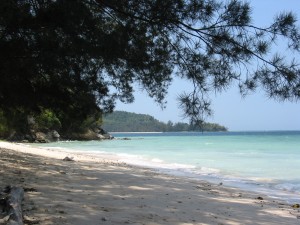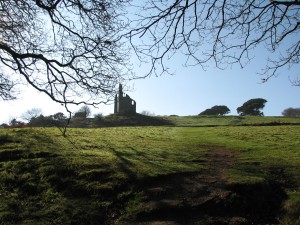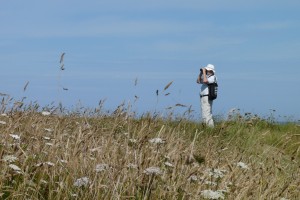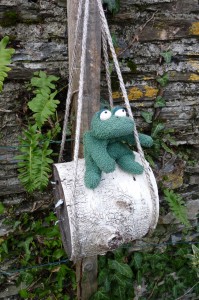Let’s give our readers a sense of place.
A reader wants to be able to picture your story in her imagination. One of the most effective ways to create atmosphere is to slip in descriptions which use one or more of the five senses. You could have the character react to what is going on around her, using one of her senses.
 Does your heroine shade her eyes as she looks at the smooth turquoise sea? Is the sand burning the soles of her feet?
Does your heroine shade her eyes as she looks at the smooth turquoise sea? Is the sand burning the soles of her feet?
A boy is climbing the hill towards the ruin. What could you write to set this scene? Does it depend on the plot itself? Could you write words to make the scene feel a bit creepy? Or is the boy feeling relief because he may not be lost any more?
What could you write to set this scene? Does it depend on the plot itself? Could you write words to make the scene feel a bit creepy? Or is the boy feeling relief because he may not be lost any more?
Making your work stand out
I’ve been taking part in the free course I mentioned in my last blog. (Open University. Start writing fiction.) One of the lessons is about using familiar words in unfamiliar places.
We were given the following example by writer V.S.Pritchett.
‘The sea fog began to lift towards noon. It had been blowing in, thin and loose, for two days, smudging the tops of the trees up the ravine where the house stood.’
(Pritchett, V. S. (1980) ‘On the Edge of the Cliff’ in On the Edge of the Cliff and Other Stories, Chatto and Windus: London, p.3.)
I love the use of the words ‘thin and loose’ and the idea of the fog ‘smudging the tops of the trees.’
Could we begin to use familiar language in unfamiliar places? To help the reader lose themselves in our story?
To help the reader lose themselves in our story?
I’m sorry to say this, but as a setting, it’s taking me right out of my comfort zone.

